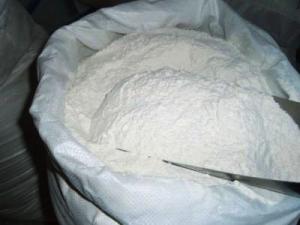Wheat for milling flour
English
Ukraine as well as Russia is one of biggest producers and exporters of Wheat in the world.
1Wheat (Triticum spp.) is a cereal grain, originally from the Levant region of the Near East and Ethiopian Highlands, but now cultivated worldwide. In 2010, world production of wheat was 651 million tons,making it the third most-produced cereal after maize (844 million tons) and rice (672 million tons). Wheat was the second most-produced cereal in 2009; world production in that year was 682 million tons, after maize (817 million tons), and with rice as a close third (679 million tons).

This grain is grown on more land area than any other commercial food. World trade in wheat is greater than for all other crops combined. Globally, wheat is the leading source of vegetable protein in human food, having a higher protein content than other major cereals, maize (corn) or rice. In terms of total production tonnages used for food, it is currently second to rice as the main human food crop and ahead of maize, after allowing for maize's more extensive use in animal feeds.
Wheat was a key factor enabling the emergence of city-based societies at the start of civilization because it was one of the first crops that could be easily cultivated on a large scale, and had the additional advantage of yielding a harvest that provides long-term storage of food. Wheat grain is a staple food used to make flour for leavened, flat and steamed breads, biscuits, cookies, cakes, breakfast cereal, pasta, noodles, couscous and for fermentation to make beer, other alcoholic beverages, or biofuel.
The whole grain can be milled to leave just the endosperm for white flour. The by-products of this are bran and germ. The whole grain is a concentrated source of vitamins, minerals, and protein, while the refined grain is mostly starch.
Raw wheat can be ground into flour or, using hard durum wheat only, can be ground into semolina; germinated and dried creating malt; crushed or cut into cracked wheat; parboiled (or steamed), dried, crushed and de-branned into bulgur also known as groats. If the raw wheat is broken into parts at the mill, as is usually done, the outer husk or bran can be used several ways. Wheat flour is a major ingredient in  such foods as bread, porridge, crackers, biscuits, Muesli, pancakes, pies, pastries, cakes, cookies, muffins, rolls, doughnuts, gravy, boza (a fermented beverage), and breakfast cereals.
such foods as bread, porridge, crackers, biscuits, Muesli, pancakes, pies, pastries, cakes, cookies, muffins, rolls, doughnuts, gravy, boza (a fermented beverage), and breakfast cereals.
 such foods as bread, porridge, crackers, biscuits, Muesli, pancakes, pies, pastries, cakes, cookies, muffins, rolls, doughnuts, gravy, boza (a fermented beverage), and breakfast cereals.
such foods as bread, porridge, crackers, biscuits, Muesli, pancakes, pies, pastries, cakes, cookies, muffins, rolls, doughnuts, gravy, boza (a fermented beverage), and breakfast cereals.The biggest wheat producer in 2010 was EU-27, followed by China, India, USA and Russian Federation.
The largest exporters of wheat in 2009 were, in order of exported quantities: United States, EU-27, Canada, Russian Federation, Australia, Ukraine and Kazakhstan. Upon the results of 2011, Ukraine became world's sixth wheat exporter as well. The largest importers of wheat in 2009 were, in order of imported quantities: Egypt, EU-27, Brazil, Indonesia, Algeria and Japan. EU-27 was on both export and import list, because EU countries such as Italy and Spain imported wheat, while other EU-27 countries exported their harvest. The Black Sea region – which includes Kazakhstan, the Russian Federation and Ukraine – is amongst the most promising area for grain exporters; it possesses significant production potential in terms of both wheat yield and area increases. Black sea region is also located close to the traditional grain importers in the Middle East, North Africa and Central Asia.
In the rapidly developing countries of Asia, westernization of diets associated with increasing prosperity is leading to growth in per capita demand for wheat at the expense of the other food staples.
In the past, there has been significant governmental intervention in wheat markets, such as price supports in the USA and farm payments in the EU. In the EU these subsidies have encouraged heavy use of fertilizer inputs with resulting high crop yields. In Australia and Argentina direct government subsidies are much lower.
“Valmar Ingredients” LLC. able to supply you the wheat for milling flour both Ukraine and Russia origin.
